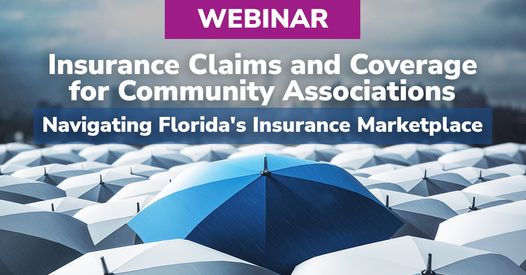Patrick C. Howell of Becker
Last year, Florida politicians attempted to weaponize Chapter 558 of the Florida Statutes and eviscerate the cause of action for violations of the Florida Building Code. Thankfully, that legislation died in committee and never saw the light of day.
Unfortunately, through H.B. 583 filed by Rep. Clay Yarborough, R-Jacksonville, and S.B. 736 filed by Sen. Travis Hutson, R-St. Augustine, developer-backed politicians are once again seeking to weaponize Chapter 558, and, this time, completely eliminate the tolling provisions in Section 95.11(3)(c) of the Florida Statutes for latent construction defects.
In their current iterations, Chapter 558 and Section 95.11(3)(c) are consumer- friendly provisions drafted and signed into law to protect Florida homeowners, homeowner associations and condominiums from defective construction, provide for the resolution of construction defect claims, and promote the settlement of claims without litigation.
Chapter 558 was passed by the Legislature years ago to assist with the resolution of claims outside of litigation. It requires that a party damaged by construction defects submit the claim to the at-fault developer or contractor, allows for inspections, and gives the developer or contractor an opportunity to settle the claim.
This process has worked effectively for many years and has resulted in countless settlements without expensive litigation. The changes proposed during this legislative session would severely damage Chapter 558 and the ability of homeowners, HOAs and condominiums to timely submit claims and foster settlements outside of court.
First, the proposed amendments take a heavy-handed approach with regard to owners, condos and HOAs versus developers and contractors. Under the changes proposed, if an owner, condo or HOA rejects a settlement offer, they must then prove that the offer wasn’t enough to address the repairs.
However, what is the penalty for a developer or contractor ignoring a properly served and documented Section 558 claim? Nothing. Just this one provision shows how anti-consumer and pro-developer this bill is.
Second, poison pill language has been worked into the bill that would require that a party receiving settlement funds (1) execute a contract to start repairs within 90 days; and (2) complete the repairs in one year.
Beyond the big government incursion into our day-to-day decisions, which is by itself disturbing, here’s the nightmare scenario this provision sets up: A condominium association has a multiparty claim against the developer, contractor, subcontractors and design professionals for a structure built with numerous defects to the roof, framing, stucco, foundations and windows.
The stucco subcontractor makes an offer to settle related to its scope of work. The owner accepts the offer. Under this bill, a contract to complete the repair to the stucco must be finalized within 90 days and the work must be completed within a year.
This is despite the fact that the owner has not settled with the contractor, developer, roofer, the window supplier or any of the other trades. So the work to the stucco gets completed, as mandated by this bill, and the claims continues against everyone else.
Two years later, the owner gets a verdict against the other parties and has the money to address the remaining defects. Unfortunately, the newly replaced stucco now has to be torn off to address the defective framing underneath the stucco, the windows installed in the stucco walls, and the roofs with kickouts and other elements adjacent to the stucco. It’s doubtful that anyone would ever accept a settlement offer under these circumstances.
This provision sets up for failure a claim made under Chapter 558, as well as the resulting settlement offer, at least for claims involving defects to more than one building element. As such, this amendment just won’t work for condominium towers, multifamily buildings, or homes constructed by dozens of different trades.
Third, the new proposed Section 558.0045 requires that the judge in a pending construction defect case appoint a third-party expert engineer, contractor or building code inspector to inspect the structures involved in litigation and issue a report 15 days later. The bill doesn’t detail how this appointed expert is to be paid beyond the statement that “the parties shall compensate the expert.”
So under this bill, each of the parties have the expenses of their own expert witnesses, plus now they have to share in the expense of an additional expert witness or witnesses. Wealthy developers will be easily able to foot the bill for these extra costs, but such will be a difficulty for an HOA, condominium or individual owner.
Despite the added expense required by this bill, the third-party expert does not have the ability to make any sort of decisions that bind any of the parties. So what really is the point? Also, it is unclear who would be the party contracting with the expert, and it’s hard to see any court signing off on such a contract. As such, what expert would expose themselves to the liability for these inspections without some contractual protection? Why would they?
Fourth, the new proposed Section 558.0046 requires that a claimant receiving compensation repair the defect. But why? If a defect renders a building uninhabitable and the plaintiff receives compensation for that loss, why shouldn’t they be able to demolish the building and use the settlement or verdict proceeds however they want?
The government should not be in the business of telling its citizens what to do with such proceeds.
Furthermore, settlements often occur because a plaintiff decides to take less than what they are owed, repair some defects and live with the others that don’t affect habitability. This provision would discourage such settlements, which goes against the very purpose behind Chapter 558.
As with last year’s disastrous bill, the proposed amendments to Chapter 558 also go so far as to insert big government into the relationship between a homeowner and their mortgage company. The amendments add a new subsection requiring that a homeowner with defects advise their mortgage company that they’ve asserted a construction defect claim as to the property and provide other details about the resolution of the claim.
This requirement could jeopardize the homeowner’s loan and expose the homeowner to inordinate amounts of red tape. There is nothing in the description of the bill advising as to the goal of this proposed change or what wrong it proposes to right. Note that no banking institutions or mortgage lenders have even requested this change to Chapter 558.
As such, and considering the other proposed changes to Chapter 558, it is assumed this is just another barrier that is being erected to dissuade homeowners, HOAs and condominiums from pursuing otherwise legitimate claims for construction defects against developers and contractors.
The proposed bill also tinkers with Section 95.11(3)(c) of the Florida Statutes, which establishes a four- year statute of limitations for construction defect claims. To protect consumers, the same provision also includes a provision that the statute of limitations does not begin to run on latent defects until the defect is discovered or should have been discovered with the exercise of due diligence.
To then in turn protect developers and contractors, there is an absolute bar to such claims 10 years after the completion of construction. This time period was shortened from 15 years to 10 a few years back. This absolute bar is known as the statute of repose. When the statute of repose runs on a claim, the homeowner, HOA and condominium is then forever precluded from bringing a claim against the developer or contractor.
However, under the amendments proposed by this bill, the concept of latency is completely removed from Section 95.11(3)(c). As such, if this law passes, courts will be required to apply a hard four-year statute of limitations for construction defect actions, with the time running from the certificate of occupancy, completion of the contract, etc. What this would mean for consumers is that the 10-year period for bringing claims based on latent defects would be effectively shortened to four years.
Thus, a developer would be able to complete a community and then maintain control over the HOA for just four additional years to run out the statute of limitations.
This change also completely disregards the nature of construction. As a condominium tower, townhome building, or home is built, trades working on the structure naturally cover up the work of the trades that came before them. The framer covers up the completed concrete foundation, the stucco and roofing contractors cover up the framing, the painter covers up the stucco, and on and on.
Thus, it is easy to see how defects can be hidden and not noticed by the end user owner for several years to come. Careful inspections along the way can forestall mistakes, but careful inspections don’t always occur.
Allowing affected owners or associations to sue over defects that have been covered up by contractors and developers keeps contractors and developers accountable and results in better construction. Taking such a cause of action away will just result in shoddy construction, and owners and associations will have no way of rectifying dangerous conditions on their property.
The proposed changes included in S.B. 736 and H.B. 583 would weaken consumer protections, increase litigation costs and result in the settlement of fewer claims outside of litigation. The changes to Chapter 558 and Section 95.11(3)(c) should be vigorously opposed by anyone who supports consumer rights for homeowners, HOAs and condominiums.
To view the original Law360 article, please click here. (Subscription required.)
Reprinted with permission from Law360.
 Patrick C. Howell
Patrick C. Howell
Office Managing Shareholder
PHOWELL@beckerlawyers.com
Tags:
Board of Directors,
Business Articles,
Law and Legal,
Members Articles





 Many Floridians live within a community operated by an association of some kind, be it a community of single-family homes under the jurisdiction of a homeowner’s or property owner’s association, or a condominium building maintained by a condominium association. These owners should be well-aware that many aspects of life within these communities are subject to restrictions outlined in a set of governing documents, which include a declaration, articles of incorporation, bylaws, and rules and regulations. While the declaration, articles of incorporation, and bylaws are typically recorded among the public records of the county in which the community is located, the rules and regulations are typically not recorded.
Many Floridians live within a community operated by an association of some kind, be it a community of single-family homes under the jurisdiction of a homeowner’s or property owner’s association, or a condominium building maintained by a condominium association. These owners should be well-aware that many aspects of life within these communities are subject to restrictions outlined in a set of governing documents, which include a declaration, articles of incorporation, bylaws, and rules and regulations. While the declaration, articles of incorporation, and bylaws are typically recorded among the public records of the county in which the community is located, the rules and regulations are typically not recorded. Jeffrey Rembaum, Esq. of
Jeffrey Rembaum, Esq. of 









